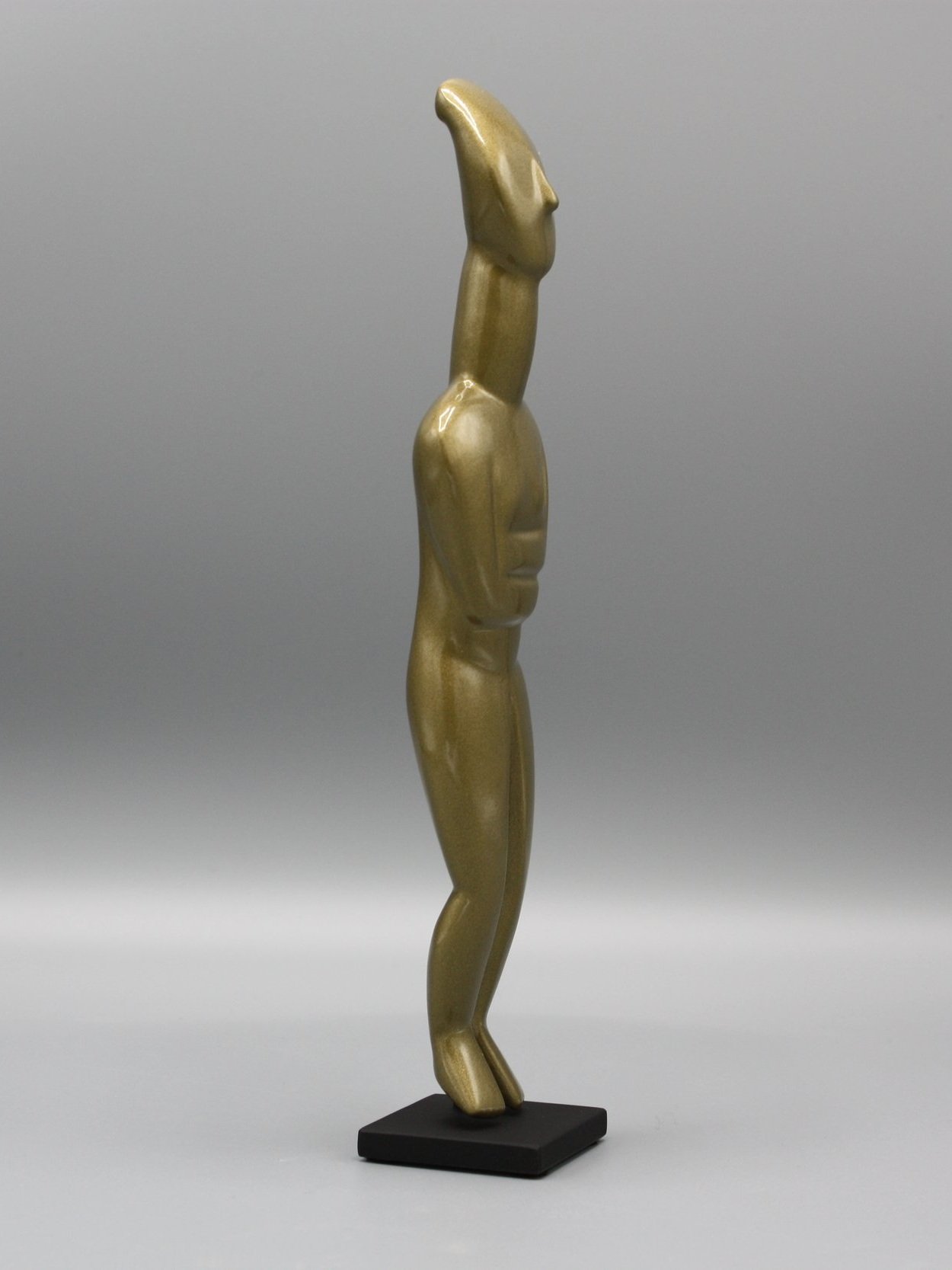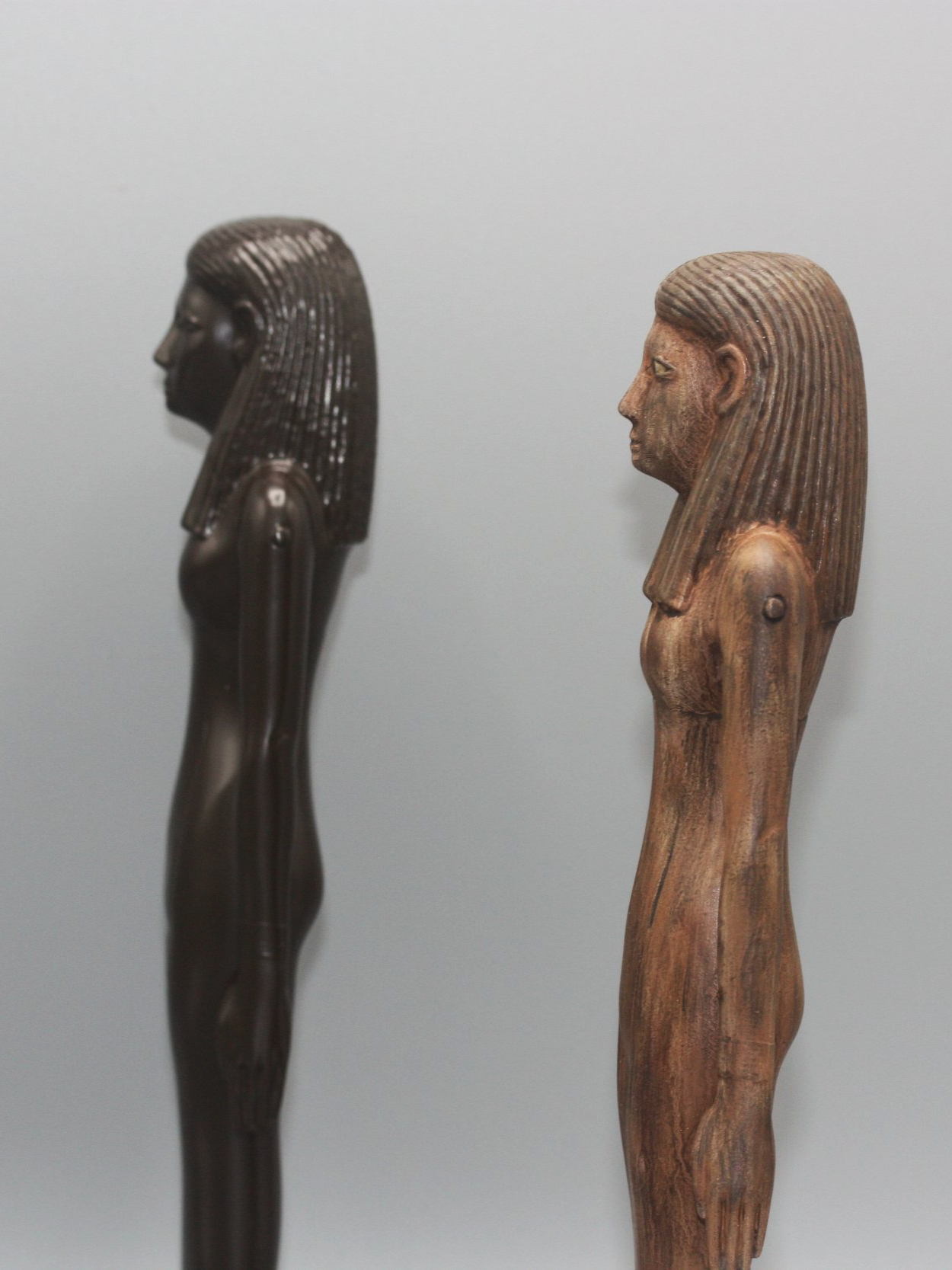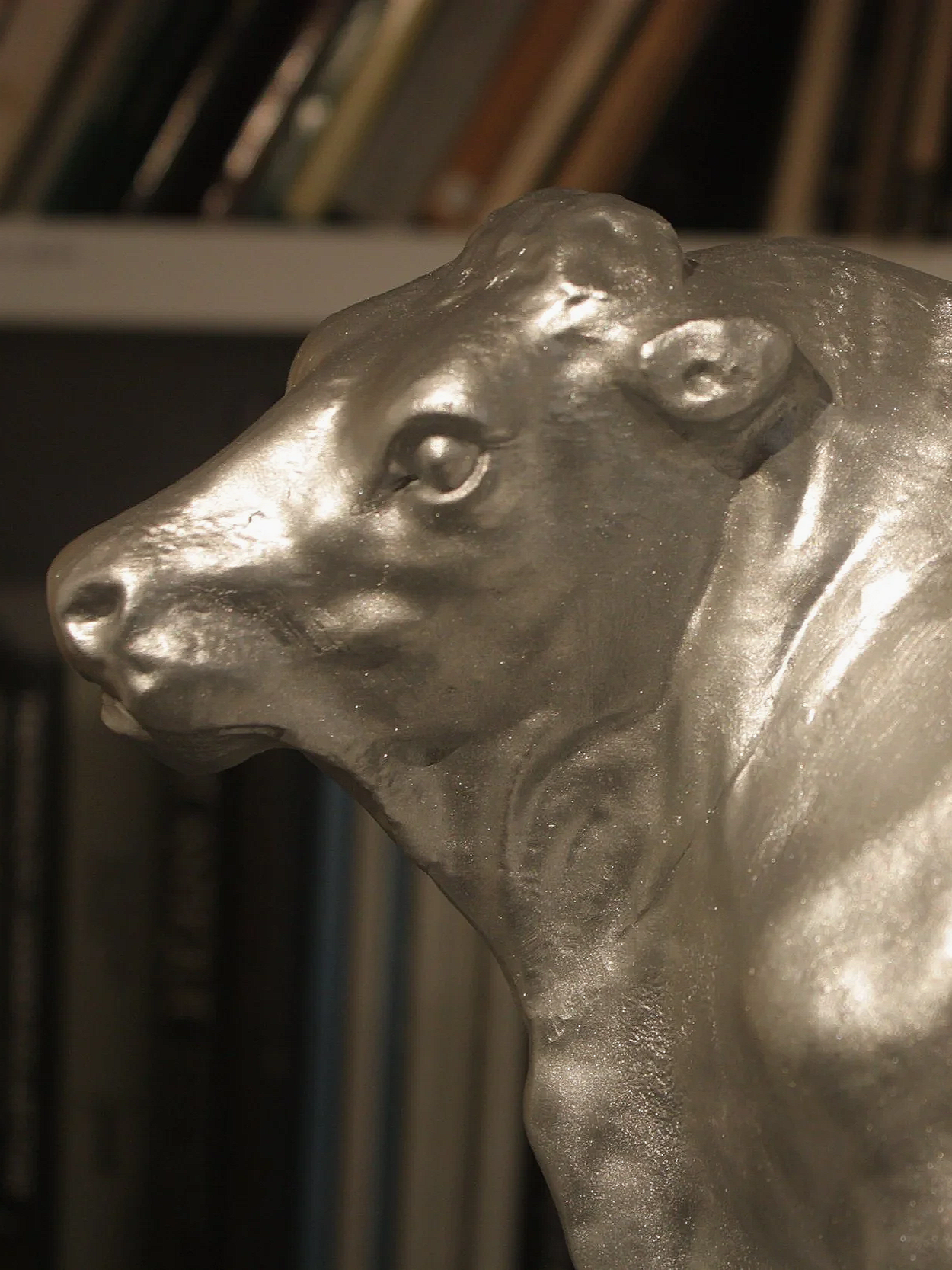 Image 1 of 2
Image 1 of 2

 Image 2 of 2
Image 2 of 2



Olive Gold Cycladic Idol
Alexander Aboutaam
Limited Edition of 11
Contempo
2025
High-grade polyresin, painted and hand-polished. Handcrafted custom steel support plate
H: 23 cm (9.1 in)
Ancient Original
Early Cycladic II period, ca. 2500 to 2400 B.C.
Marble
H: 21 cm (8.3 in)
Description
This polyresin Cycladic idol originates from the Mediterranean, inspired by the mysterious art of an ancient civilization. Reimagined with a olive golden modern touch, it revitalizes the timeless aesthetics of its Mediterranean roots.
The creation of the contempo starts with research into authentic masterpieces, allowing Antico Contempo to determine how antiques can be thoughtfully reimagined through a contemporary lens. Every piece is examined to identify its unique qualities and what processes are required for adaptation.
High-resolution 3D scans are captured using structured light and infrared sensing, with real-time refinements made to preserve surface nuances and structural integrity. The raw data is reworked to create watertight, workshop-ready meshes.
Through a meticulous back-and-forth process of digital sculpting, 3D printing, and casting and molding, Antico Contempo creates a physical art piece that combines aesthetics of both the ancient and contemporary world.
This contempo captures the form, shape and proportionality of the ancient original, giving the ultimate connection to the ancient piece. Known for its “Oscar-like” aesthetic, collectors enjoy have enjoyed its bold look. There are only 11 limited editions available of this piece.
The original marble idol dates to Early Cycladic II, circa 2500-2400 B.C., attributed to a prolific Naxos Sculptor of the Spedos variety. Details highlighted red and blue pigments, while surviving almond-shaped eyes feature dotted pupils. This golden-toned version adds a brighter, luxurious touch.
Cycladic marble idols, typically depicting reclining folded-arm female figures, originate from the Cyclades in the Aegean Sea. Known for their simple, appealing design, these statuettes are central to Cycladic art. Historians interpret them as concubines for the deceased, offering protection in the afterlife.
More detailed literature of the ancient original piece available upon request.
Alexander Aboutaam
Limited Edition of 11
Contempo
2025
High-grade polyresin, painted and hand-polished. Handcrafted custom steel support plate
H: 23 cm (9.1 in)
Ancient Original
Early Cycladic II period, ca. 2500 to 2400 B.C.
Marble
H: 21 cm (8.3 in)
Description
This polyresin Cycladic idol originates from the Mediterranean, inspired by the mysterious art of an ancient civilization. Reimagined with a olive golden modern touch, it revitalizes the timeless aesthetics of its Mediterranean roots.
The creation of the contempo starts with research into authentic masterpieces, allowing Antico Contempo to determine how antiques can be thoughtfully reimagined through a contemporary lens. Every piece is examined to identify its unique qualities and what processes are required for adaptation.
High-resolution 3D scans are captured using structured light and infrared sensing, with real-time refinements made to preserve surface nuances and structural integrity. The raw data is reworked to create watertight, workshop-ready meshes.
Through a meticulous back-and-forth process of digital sculpting, 3D printing, and casting and molding, Antico Contempo creates a physical art piece that combines aesthetics of both the ancient and contemporary world.
This contempo captures the form, shape and proportionality of the ancient original, giving the ultimate connection to the ancient piece. Known for its “Oscar-like” aesthetic, collectors enjoy have enjoyed its bold look. There are only 11 limited editions available of this piece.
The original marble idol dates to Early Cycladic II, circa 2500-2400 B.C., attributed to a prolific Naxos Sculptor of the Spedos variety. Details highlighted red and blue pigments, while surviving almond-shaped eyes feature dotted pupils. This golden-toned version adds a brighter, luxurious touch.
Cycladic marble idols, typically depicting reclining folded-arm female figures, originate from the Cyclades in the Aegean Sea. Known for their simple, appealing design, these statuettes are central to Cycladic art. Historians interpret them as concubines for the deceased, offering protection in the afterlife.
More detailed literature of the ancient original piece available upon request.
Creation
The creation of the contempo starts with research into authentic masterpieces, allowing Antico Contempo to determine how antiques can be thoughtfully reimagined through a contemporary lens. Every piece is examined to identify its unique qualities and what processes are required for adaptation.
High-resolution 3D scans are captured using structured light and infrared sensing, with real-time refinements made to preserve surface nuances and structural integrity. The raw data is reworked to create watertight, workshop-ready meshes.
Through a meticulous back-and-forth process of digital sculpting, 3D printing, and casting and molding, Antico Contempo creates a physical art piece that combines aesthetics of both the ancient and contemporary world.



















